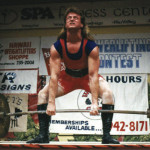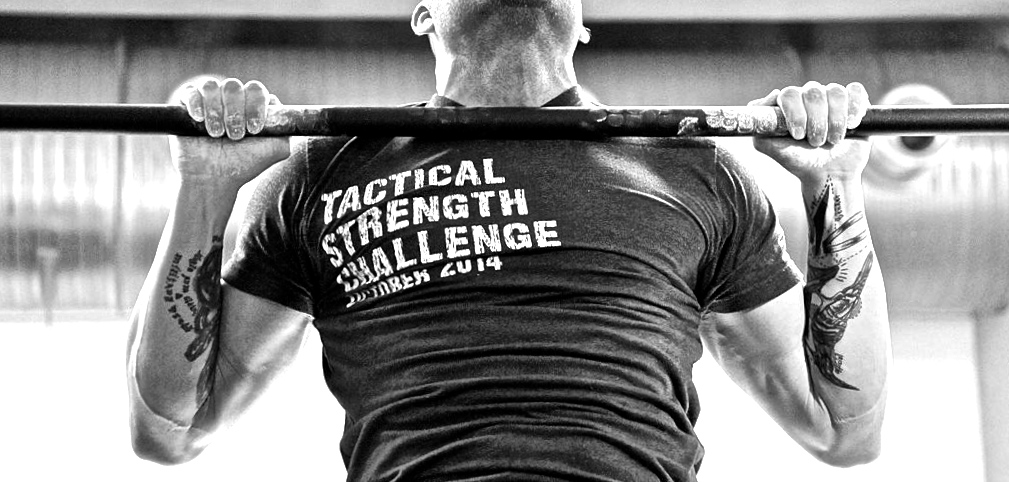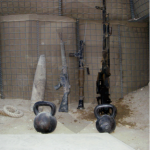Co-authored by Ryan Toshner
The TSC is StrongFirst’s bi-annual strength challenge, where participants put their training pedal to the competition metal. Judged on performance while adhering to solid lifting technique, the upcoming TSC is the perfect opportunity to focus your training on new goals—learning to lift, beating a previous personal best, or ascending the podium. Participant registration opens on February 17.
With only three events—bodyweight pull-up, kettlebell snatch, and barbell deadlift—the Tactical Strength Challenge (TSC) seems pretty straightforward. But while the challenge is accessible to anyone, each of these exercises is highly technical, so there’s plenty of margin for error. Knowing the most frequent mistakes—both in terms of technique and tactics—and how to fix them could make the difference between achieving your personal best…or not. This article aims to help you head into the spring 2020 TSC (or any future event or training day) with confidence that your technique will keep you safe and deliver solid numbers.
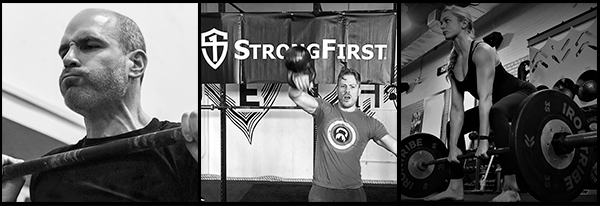
You may know that we have both been regular competitors on the TSC “circuit.” But you may be unaware that we are very active behind the scenes, having coached many athletes to impressive results and served as judges and organizers. Participating in all four roles gives us a uniquely expanded view of the lifts from every perspective.
It’s one thing to know what “right” looks and feels like in the heat of competition (as longtime StrongFirst friend and TRX Performance Director, Chris Frankel, would put it), but quite another to view it with a coach’s eye or through a standards-based judging lens.
With these differing viewpoints in mind, we’ll review each exercise and identify the most common errors we see athletes or competitors make, whether we are training or judging them. We’ll also provide our top fixes so you can be your best when testing day rolls around.
Deadlift
One of the most common deadlift errors is over-exuberance—the athlete gets all hyped up, rushes to the bar, and yanks it off the floor. While we understand the enthusiasm and desire to harness adrenaline, this eagerness has pitfalls. First, in their haste, the person often starts pulling the weight with the bar at a weird angle because they haven’t taken the time to place their hands on it symmetrically. This can contribute to an inadequate grip that fails to control the weight throughout the entire bar path, resulting in a no-lift call from the judge. We also frequently see uneven foot placement, which leads to overcompensation on one side or another. Finally, rushing headlong into the deadlift can encourage pulling too hard with the arms and de-emphasizing the lower body, which, at higher weights, is a sure-fire recipe for disaster, even if you’re strong.
To curb this over-exuberance, practice patience in your setup. Walk up to the bar and follow the same routine your coach would guide you through in training. Ensure that you’ve appropriately spaced your feet and set an even grip. Get your breathing under control, take the slack out of the bar, and brace as you usually would. Then strive for an evenly paced pull in which you drive your feet through the floor and let your legs and glutes do the heavy lifting (literally).
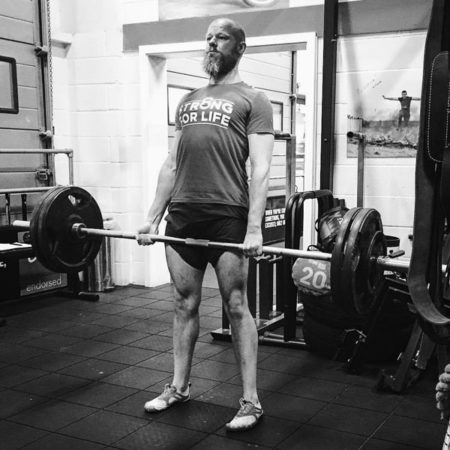
Another performance-leaking mistake is starting the competition with the wrong weight. You might assume that we’re talking about beginning too heavy but, in fact, the opposite is often the case. Say someone who pulled 200 pounds in the last TSC targets 235 or more in this one. They orient most of their training around this but then open with 185. Why open with a weight you’ve achieved before starting your new training plan to go heavier? Such a conservative lift is best used to warm-up.
A better strategy would be to warm-up with 70% (x2-3 reps), 80% (x1-2 reps), and 90% (x1 rep) of your intended TSC opening weight, which might be 200, 205 or even 210, as you know you can do it. This will then give you two attempts to reach or even exceed your goal weight. Get it on rep two? Great—add some weight. Miss it? Shake it off, rest, then give it another shot.
Pull-up
The pull-up is probably responsible for more technique mistakes than the deadlift and snatches combined. One of the most typical is failing to get the whole jawline above the bar, either thinking that just clearing the chin is a good rep (it isn’t) or not knowing that you are falling short. If you feel yourself extending your neck and sense the bar graze anywhere near your chin, or if you are unsure whether you are meeting the standard, get a side view. A training coach, partner, or video camera observing from the side of the bar will give a useful perspective since it is difficult to tell what’s happening from the back or front.
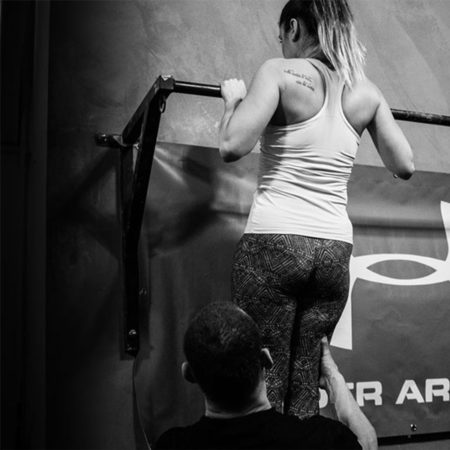
Another no-rep fault is when athletes kip as they try to generate a powerful initial pull. Perhaps fine in certain types of workouts, it has no place in the TSC. Our tactical pull-ups are strength skills, not momentum ones. We want each rep to be an individual effort. To avoid kipping, first, minimize how much you swing your heels back as this will generate counter-momentum forward. Next, be careful not to contract your abs maximally on the way up, as this would encourage a forward leg swing. Third, be mindful of your knees—if they go up, they’re not allowed to come back down again until after your jaw clears the bar. To finish the top portion of the pull-up, imagine driving your elbows back and down like you’re trying to hit someone standing behind you.
From a tactical standpoint, many athletes tend to start too fast and bang out as many reps as quickly as possible because they fear fatigue. We empathize—nobody wants horrible lactic burn to kick in and zap their momentum. Unfortunately, being too quick out of the gate is counterproductive as you can burn out too soon and fail to reach your potential. It’s better to practice patience and a more even, sustainable cadence, so you avoid the “fly and die.” (Thanks to our friends in the running community for that one.)
Another downside of going hard and fast is that athletes fail to straighten their arms at the bottom of each rep—which is a technique fail—as fatigue encourages bouncing into the next rep. To avoid such no-counts, ensure you fully extend both elbows as you come back down from the bar, paying attention to where the triceps meet the back of the elbows. At the very bottom, your biceps should cover your ears.
Snatch
The most significant tactical mistake people make in their kettlebell snatches is the cadence—they start fast and then quickly fade, mirroring what we see in pull-ups. The most effective place to learn to avoid this is in training. Have your coach or training partner periodically time you to make sure you’re keeping a reasonable and sustainable pace for the duration.
From a form point of view, over-gripping the kettlebell is a common issue that often goes hand in hand with coming off of the starting blocks too quickly. Not only can over-gripping tear up your hands, but it can also prematurely fatigue your forearms. Despite major hip muscles still having much to give, you are forced to slow down or even stop because you’ve burned out your grip. To avoid hand and forearm problems, concentrate on maintaining just enough grip, even when your arm is straight, so you don’t lose the kettlebell—not too little, or too much.
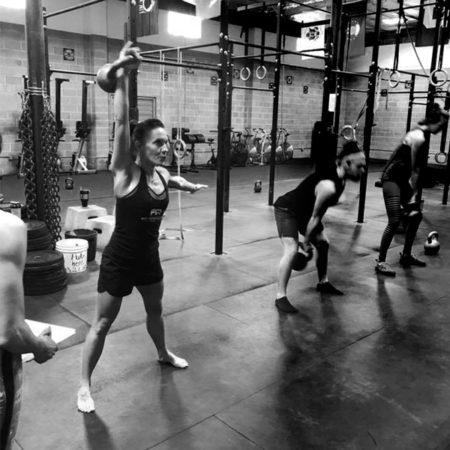
Another reason that athletes grip excessively is that they don’t entirely trust the float or catch/backswing phases of the exercise. This is understandable when swinging a heavier weight than you’re used to. But when you’re snatching a bell that you’ve trained with for weeks or even months, you should be confident that you can control it throughout the full range of motion. To quell any doubts, remind yourself that once you’ve completed your hinge—where you may have needed an extra little squeeze for the direction change—you’ve generated sufficient momentum with your hips for the bell to float upwards that your arm simply has to catch. A super-tight grip is overkill.
Check back soon for the second part in this TSC series, in which Derek and Ryan will share their program for the TSC, offer tips for the day of the event, and offer pointers for getting your mind right.
Want to host a TSC at your facility? Registration is open until February 9th.
